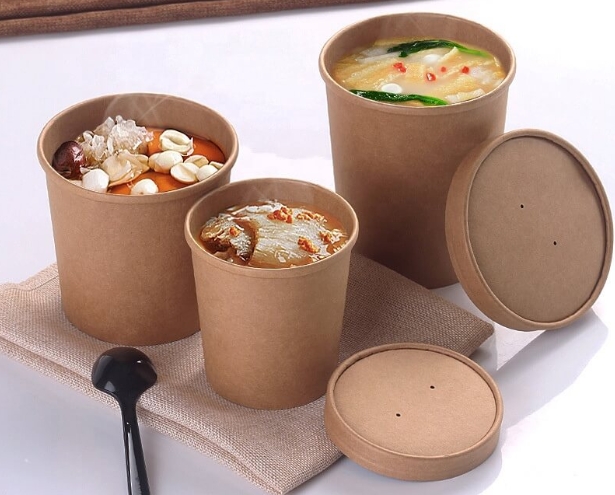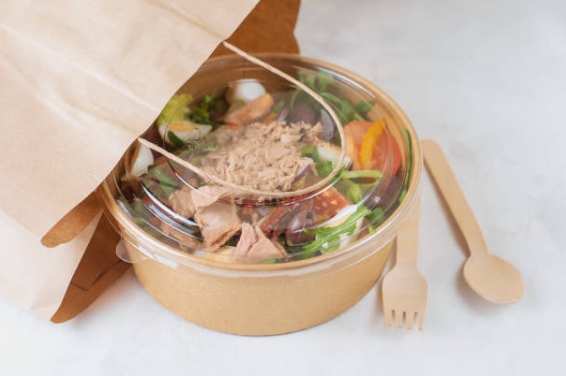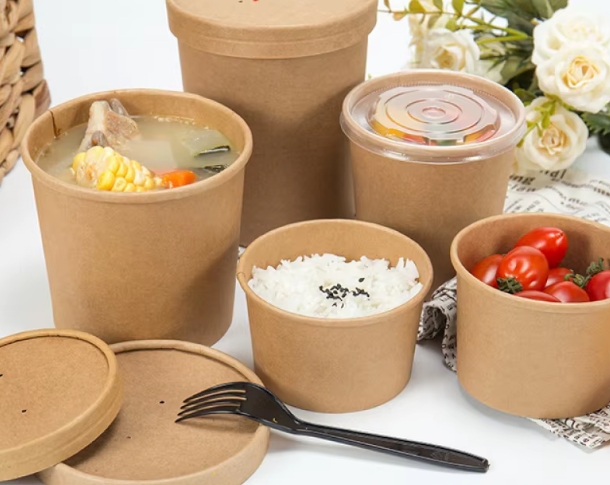
Content Menu
● Understanding Disposable Bowl Plate Combos
● Types of Materials Used in Disposable Bowl Plate Combos
>> Plastic Combos
>> Paper Combos
>> Eco-Friendly Materials
● What Makes a Disposable Bowl Plate Combo Microwave Safe?
● How to Identify Microwave Safe Disposable Bowl Plate Combos
>> Look for Labels
>> Check the Packaging
>> Conduct a Simple Test
● Risks of Microwaving Non-Microwave Safe Combos
● Best Practices for Microwaving Disposable Bowl Plate Combos
● Environmental Considerations
● Common Myths About Microwave Safety
>> Myth: All Plastics Are Unsafe for Microwaves
>> Myth: All Paper Products Are Safe in the Microwave
>> Myth: Microwave Safe Means Indestructible
● The Science Behind Microwave Safety
● Practical Scenarios: When to Use Disposable Bowl Plate Combos in the Microwave
>> Reheating Leftovers
>> Serving Hot Foods at Events
>> Meal Prep and Takeout
● Tips for Safe Use
● Alternatives to Disposable Bowl Plate Combos
● Conclusion
● Frequently Asked Questions (FAQ)
>> 1. What should I do if my disposable bowl plate combo does not have a microwave-safe label?
>> 2. Can I microwave a combo made from recycled materials?
>> 3. How long can I safely microwave food in a disposable bowl plate combo?
>> 4. Are compostable or biodegradable combos always microwave safe?
>> 5. What are the signs that a disposable bowl plate combo is not safe for microwave use?
Disposable bowl plate combos have become a staple in modern kitchens, parties, picnics, and events due to their convenience and versatility. As more people rely on these single-use items for serving and reheating food, a common question arises: are disposable bowl plate combos microwave safe? This article explores the safety, materials, labeling, and best practices for using disposable bowl plate combos in the microwave, providing thorough guidance for safe and effective use.

Understanding Disposable Bowl Plate Combos
Disposable bowl plate combos are innovative products designed to serve as both a bowl and a plate, offering flexibility for a variety of foods. They are typically made from materials such as paper, plastic, or eco-friendly fibers. Their design aims to reduce the need for multiple utensils, making clean-up easier and minimizing waste.
Types of Materials Used in Disposable Bowl Plate Combos
Plastic Combos
Many disposable bowl plate combos are made from plastic, which can vary in composition. Some plastics are engineered to withstand microwave heating, while others may warp, melt, or leach chemicals into food when exposed to high temperatures.
Paper Combos
Paper-based combos are popular for their biodegradability and lightweight nature. However, not all paper products are created equal. Some are treated to resist moisture and heat, while others may become soggy or even catch fire if microwaved improperly.
Eco-Friendly Materials
Increasingly, manufacturers are offering combos made from plant fibers, palm leaves, or other compostable materials. These are designed to be both environmentally friendly and functional, but their microwave safety can vary depending on the manufacturing process.
What Makes a Disposable Bowl Plate Combo Microwave Safe?
The microwave safety of a disposable bowl plate combo depends on several factors:
- Material Composition: Some plastics and papers are formulated to withstand microwave heat without breaking down or releasing harmful substances.
- Manufacturing Standards: Products labeled as microwave safe have undergone testing to ensure they do not melt, warp, or release toxins when microwaved.
- Absence of Metal: Any combo containing metallic elements or decorations should never be used in a microwave, as metal can cause sparks and fires.
How to Identify Microwave Safe Disposable Bowl Plate Combos
Look for Labels
The most reliable way to determine if a disposable bowl plate combo is microwave safe is to check for a label or symbol. Many manufacturers emboss a microwave-safe symbol-often resembling wavy lines-on the bottom of the product or its packaging. This indicates the item has been tested for microwave use.
Check the Packaging
If the product's packaging is still available, look for explicit statements regarding microwave safety. Manufacturers often include instructions or warnings about suitable uses.
Conduct a Simple Test
If there is no label, a simple test can help assess microwave safety:
1. Place a cup of water and the disposable bowl plate combo side by side in the microwave.
2. Heat on high for one minute.
3. Remove both items carefully. If the combo remains cool while the water is hot, it is likely safe for microwave use. If the combo becomes hot, it may not be suitable for microwaving.

Risks of Microwaving Non-Microwave Safe Combos
Using a disposable bowl plate combo that is not designed for microwave use can pose several risks:
- Melting or Warping: Some plastics may deform, compromising the structure and causing spills.
- Chemical Leaching: Certain plastics can release harmful chemicals into food when heated.
- Fire Hazard: Paper combos not intended for microwave use may ignite, especially if they contain inks or coatings.
- Food Contamination: Materials breaking down can mix with food, making it unsafe to eat.
Best Practices for Microwaving Disposable Bowl Plate Combos
- Always Check for Microwave Safe Labeling: Only use combos that are clearly marked as microwave safe.
- Avoid Overheating: Even microwave-safe products can fail if subjected to excessive heat or prolonged cooking times.
- Do Not Microwave Empty Combos: Heating an empty disposable bowl plate combo can damage the material.
- Avoid Using with Oily or Fatty Foods: High-fat foods can reach higher temperatures, increasing the risk of melting or burning.
- Do Not Use Damaged Combos: Cracked or compromised items may not withstand microwave heat safely.
Environmental Considerations
Disposable bowl plate combos offer convenience but contribute to waste. Eco-friendly options made from compostable materials can mitigate environmental impact. However, always verify that these alternatives are microwave safe, as some biodegradable materials may not tolerate microwave heat.
Common Myths About Microwave Safety
Myth: All Plastics Are Unsafe for Microwaves
Not all plastics are created equal. Many modern plastics are specifically designed for microwave use and are safe when used according to manufacturer guidelines.
Myth: All Paper Products Are Safe in the Microwave
Only paper products labeled as microwave safe should be used. Some paper combos may contain coatings, inks, or recycled materials that are not suitable for microwave heating.
Myth: Microwave Safe Means Indestructible
Even microwave-safe combos have limits. Overheating or using them with very hot or oily foods can cause them to fail.
The Science Behind Microwave Safety
Microwave ovens heat food by causing water molecules to vibrate, generating heat. Materials that absorb or reflect this energy differently can affect their suitability for microwaving. Plastics and papers designed for microwave use allow microwaves to pass through without absorbing excessive energy, preventing overheating of the container itself.
Practical Scenarios: When to Use Disposable Bowl Plate Combos in the Microwave
Reheating Leftovers
Microwave-safe combos are ideal for reheating small portions of food, especially in office or school settings where dishwashing facilities may be limited.
Serving Hot Foods at Events
For buffets or parties, using microwave-safe disposable bowl plate combos allows for quick reheating of soups, stews, or casseroles without transferring food to another dish.
Meal Prep and Takeout
Many meal delivery services use disposable bowl plate combos for convenience. Always check for microwave safety before reheating.
Tips for Safe Use
- Cover Food Loosely: Use a microwave-safe cover or vented lid to prevent splatters while allowing steam to escape.
- Rotate Food: If your microwave does not have a turntable, rotate the combo halfway through heating for even cooking.
- Let Stand Before Removing: Allow food to stand for a minute after microwaving to let heat distribute evenly and reduce the risk of burns.
Alternatives to Disposable Bowl Plate Combos
While convenient, disposable combos are not always the best choice for every situation. Consider reusable glass or ceramic containers for regular microwave use to reduce waste and ensure safety.
Conclusion
Disposable bowl plate combos offer unmatched convenience for serving and reheating food, but their microwave safety depends on the material, manufacturing standards, and proper labeling. Always check for a microwave-safe symbol or perform a simple test before microwaving. Avoid using combos that show signs of melting, warping, or chemical leaching. For the safest and most environmentally friendly experience, choose products that are both microwave safe and compostable when possible. By following these guidelines, you can enjoy the benefits of disposable bowl plate combos without compromising safety or health.

Frequently Asked Questions (FAQ)
1. What should I do if my disposable bowl plate combo does not have a microwave-safe label?
If your combo lacks a microwave-safe label, perform the simple water test described earlier or contact the manufacturer for clarification. When in doubt, avoid microwaving to prevent potential hazards.
2. Can I microwave a combo made from recycled materials?
Recycled materials may contain impurities or additives not suitable for microwave heating. Only use combos explicitly labeled as microwave safe, even if they are made from recycled content.
3. How long can I safely microwave food in a disposable bowl plate combo?
Follow the manufacturer's recommendations for time limits. Generally, short intervals of one to two minutes are safest. Avoid prolonged or repeated heating to reduce the risk of material breakdown.
4. Are compostable or biodegradable combos always microwave safe?
Not necessarily. Some compostable materials may not withstand microwave heat. Always check for a microwave-safe label or consult the manufacturer before use.
5. What are the signs that a disposable bowl plate combo is not safe for microwave use?
Signs include melting, warping, discoloration, a strong chemical odor, or the combo becoming hot to the touch after microwaving. If any of these occur, discontinue use immediately.

















